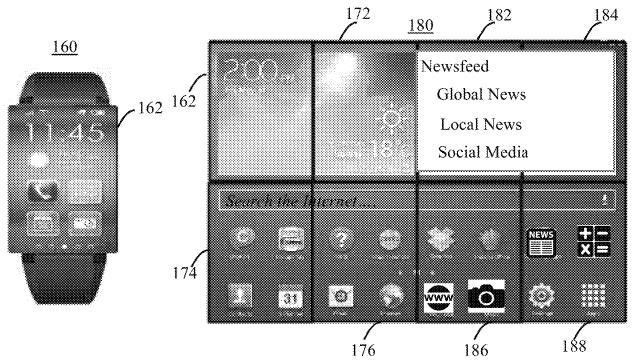Instead of maximizing pixel density to fit more info on a smartwatch’s tiny screen, IBM has patented a radically different approach that promises to change how we think about wrist wearables completely. But given the trouble companies have had with rolling out expanding screen smartphones, it’s hard to imagine this wearable ever being technically feasible.
Today, the most fashionable idea about how to make mobile devices like smartphones more functional is to use folding screen technology. It allows the device to remain relatively compact and pocketable while at the same time improving functionality and usability with a screen that can double in size to facilitate advanced multitasking features.
The initial rollout of devices with folding OLED screens hasn’t been smooth (or cheap) but it works, and it won’t take long for the technology to improve.
IBM appears to be thinking three or four moves ahead of today’s folding screen smartphones, however, with a recently approved patent titled, “Variable Display Size For an Electronic Display Device” and focused on wearables.
The patent’s illustrations detail a smartwatch-like device with a bezel-free screen capable of displaying some basic info like the time, weather, and a few shortcuts to other apps; nothing we haven’t seen before.
To give those apps a little more space to breath when opened, the patent describes a unique expanding screen system using sliding panels hidden beneath the wearable’s main housing.
The panels can be removed and connected to expand the wearable’s screen real estate into something closer to what a smartphone affords through a four-by-four array, allowing you to display more widgets or to open more capable applications. But why stop there?
IBM’s patent suggests the modular screen could be expanded with up to eight connected panels, resulting in a display as large as a phone or small tablet awkwardly perched on your wrist.
The patent goes into some details about how apps and widgets would work across the assembled screens, but it completely glosses over how these tiny screens would connect and disconnect, how they’d each be powered, and how they’d all communicate with each other.
It’s a neat idea, and it could help smartwatches live up to their full potential of being an alternative to habitually reaching for our smartphones every few minutes. In their current form, wearables aren’t much more than a second screen for most users, and this could change that.
But the technology needed for this idea to work simply doesn’t exist yet, and given IBM has offloaded most of its divisions responsible for consumer hardware, it’s hard to imagine this device coming to fruition through IBM’s efforts alone.
